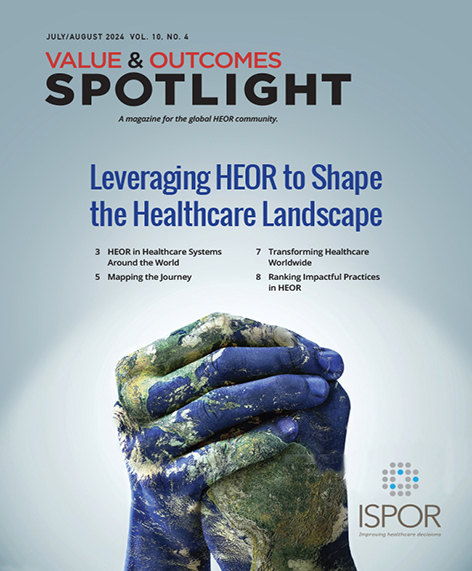Leveraging HEOR in Healthcare Systems Around the World

As of January 2024, 195 countries were recognized by the United Nations. Each of these countries has its own mechanism for managing healthcare/medical care. However, these typically tend to fall under 4 basic models of healthcare systems worldwide: the Beveridge Model, the Bismarck Model, the National Health Insurance Model, and the
Out-of-Pocket Model.
A healthcare system governed by the Beveridge Model, named after William Beveridge, is government-provided and financed and similar to the United Kingdom’s single-payer National Health Service. Countries using this model include the United Kingdom, Spain, New Zealand, Hong Kong, and Cuba. The Bismarck Model, named after Otto von Bismarck, uses a nonprofit insurance system (the insurers are called “sickness funds”) financed by employers and employees; examples of countries that utilize this model include Germany, France, Belgium, The Netherlands, Japan, and Switzerland. The National Health Insurance Model uses a single-payer national health insurance that combines private-sector providers with a government-run insurance program; countries utilizing this model include Canada, Taiwan, and South Korea. Lastly, the Out-of-Pocket Model (also referred to as “market driven” healthcare) is prevalent in less-developed countries where medical care is only accessible to the wealthy. The healthcare system in the United States is unique as it incorporates elements from all 4 models, varying based on factors such as age, employment status, and veteran status.
Regardless of which model of healthcare systems is employed, it is important to understand how health economics and outcomes research (HEOR) can be utilized by healthcare systems around the world to not only yield an economically viable and sustainable system for a country but, most importantly, to improve patient outcomes. This issue of Value & Outcomes Spotlight includes 2 articles that demonstrate examples of how HEOR is making an impact in various healthcare systems.
Value Drivers in Health Technology Assessment: A European Perspective
The article by Muir et al discusses the complexities of harmonizing health technology assessment (HTA) across the European Union (EU). HTAs, traditionally focusing on clinical- and cost-effectiveness, are now expanding to include additional value elements. The Joint Clinical Assessment aims to standardize the pan-EU assessment process by 2025. However, variations in how EU countries apply value elements in HTA, influenced by their healthcare system’s maturity and willingness to consider nonclinical value elements, pose challenges. Countries with more mature systems tend to include a broader range of value elements. To address these disparities, the authors suggest standardizing data collection and assessment methods, enhancing transparency, and promoting collaboration among EU HTA agencies. Standardizing these practices would ensure a more unified approach to HTA decision making and equitable patient access to treatments across the EU.
"Regardless of which model of healthcare systems is employed, it is important to understand how health economics and outcomes research can be utilized by healthcare systems around the world."
ISPOR Chile Organized the First National Ranking of Impactful Practices in Health Economics
In her article, Daniela Paredes-Fernández discusses ISPOR Chile Chapter’s initiative to recognize and strengthen health economics practices in Chile, a country with a fragmented HTA system. ISPOR Chile developed the first National Ranking of Impactful Practices in health economics, highlighting innovative approaches and solutions using HEOR tools by various stakeholders, including public providers, insurers, and patient groups. The initiative awarded practices across 8 categories, including Management of Medicines and Medical Devices, Diagnosis-Related Groups, HTA, Health Innovation, Cost Analysis, Outcomes Research, Patient-Led Initiatives, and Other Health Impact Initiatives. The awarded practices ranged from improving access to affordable medications to implementing efficiency management models in clinics and developing advanced tools for pharmacotherapy safety.
This initiative has brought ISPOR and Chile closer to new stakeholders, fostering a culture of evidence-based health management in Chile. It has also strengthened ties with the Ministry of Health, the National Health Fund, and other decentralized bodies, laying the groundwork for future collaborations and innovative projects to improve the national HTA system.
"By employing creative thinking, developing innovative and flexible approaches, and engaging appropriate stakeholders, a healthcare system’s unique challenges can be addressed with particular and directed evidence- based solutions."
These are just 2 examples of how HEOR has made an impact within these particular healthcare systems. With the variety of healthcare systems employed around the world, obviously no “one size fits all” HEOR approach can be developed to address their needs. Any HEOR solutions to the challenges posed by the country-specific system must be unique for that system. Clearly, the needs of each country’s healthcare system necessitate individual consideration. By employing creative thinking, developing innovative and flexible approaches, and engaging appropriate stakeholders, a healthcare system’s unique challenges can be addressed with particular and directed evidence-based solutions.
As always, I welcome input from our readers. Please feel free to email me at zeba.m.khan@hotmail.com.

